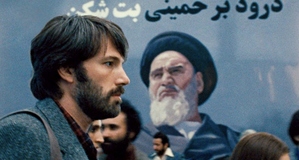Examining the Foundations of Documentary Film Through The Cove
By
2012, Vol. 4 No. 05 | pg. 2/2 | « While admirable in intent, direct cinema is ultimately an idealized fallacy. One pioneer of the movement, Frederick Wiseman, has spent a lifetime devoted to producing and directing direct cinema films and, even then, the prominent film historian Bill Nichols asserts that Wiseman’s attitude towards his subjects [read, his “particular philosophy of things”] can be derived from his directorial choices (Nichols, “Fred Wiseman” 17). Wiseman’s subjectivity and opinions –and the subjectivity and opinions of all documentarians –comes out through his choice of subjects, camera composition, and editorial decisions (Nichols, “Fred Wiseman” 17). If the father of direct cinema, the so-called “last purist of direct cinema,” cannot produce purely objective documentarians, it should not be expected of Louie Psihoyos (Wiseman 278). However, Wiseman should not be chided for his failures; his films present admirable attempts at exhibiting “life itself,” but the simple matter is that no documentary is devoid of its director’s subjectivity. What about the Lumière brothers you ask? Surely their minute-long films could not have been subjective? After all, the films present “life itself.” While the oft-quoted audience member may have believed the films to be bathed in reality, he was not quite correct. Since that first screening in 1895, five other takes of workers leaving the Lumière factory for La Sortie des l'Usine Lumière à Lyon have been unearthed (Godmillow 8). Even a simple minute long shot of workers leaving a factory was staged; it is clear that even from its inception, documentary film has been rife with subjectivity. As we have seen with Nanook and the direct cinema movement, while filmed moments might be appear to be straight “reality,” they are surely influenced by subjectivity. While the Lumière brothers’ films may have appeared to be “life itself” they were staged and while Hisato Ryono may have appeared to be in support of Psihoyos’ cause, he actually wants no part of The Cove. Nowhere in documentary history is there evidence of a filmmaker truly avoiding subjectivity as every little directorial decision has traces of subjectivity or bias (even if the director is unaware of his or her influences). As Grierson puts it, “You photograph the natural life, but you also, by your juxtaposition of detail, create an interpretation of it” (Grierson 23). The ways in which filmmakers frame, edit, and construct their films reflect the director’s own opinions, biases, and prejudices. Documentarian Scott Hicks affirms, “It’s all manipulation, let’s not be too saintly about this. I think…documentary filmmaking is a very subjective process, and anybody who tries to present themselves [sic] as telling the truth in some way is perpetrating fraud because it’s just impossible” (Ferrari). Now that we have established that documentary tradition is bathed in subjectivity and bias, we need to focus our attention to more overtly opinionated films.Recently there has been an increase in filmmakers who readily acknowledge their influence on their own films. While we have explored documentary and documentarians who have tried to hide their influence, it is important to look at those reflexive filmmakers who do not: case in point, the polarizing Michael Moore. Moore came to prominence after his 1989 documentary, Roger & Me—detailing the closings of GM plants and the resulting affect on Flint, Michigan—and gained more attention with controversial films such as Bowling for Columbine (2002) on gun control, Fahrenheit 9/11 (2004) on the Bush administration, and Sicko (2007) on the state of healthcare in the United States. Because Moore’s films overtly reflect his political agenda and biased opinions, many have criticized Moore for producing propaganda of little value. Professor and film journalist Ken Nolley believes that those who criticize Moore’s films tend to lash out at Moore’s “veracity and his ethics” more than the films themselves (Nolley). Many also disagree with Moore’s political platform so it is no surprise that one of the most controversial documentarians is one who takes strong stances on very polarizing issues. The biggest criticism hurled at The Cove is that Psihoyos never truly allows the opposition to defend its opinions and practices and when he does, he “limits all counter-arguments to a few inarticulate or thuggish boobs” (Murray). Yes, the film is very unbalanced, however, complaints of The Cove being one-sided are unnecessary; there is simply no requirement or long-standing tradition of objectivity in documentary film. For Psihoyos’ calculatedly tendentious film, there would be no reason to achieve a half-hearted balance for the sake of appearing objective. It would be silly for Psihoyos to pretend to approach the subject matter impartially and disinterested when he is clearly not impartial himself. All documentaries have traces of subjectivity so a more “objective” version of The Cove would still ultimately slant towards Psihoyos’s mission. As the documentary tradition is not fair and balanced, The Cove does not have to pretend to be and adheres closer to “life itself” by remaining subjective. We often talk of documentary film portraying “life itself” and have come to assume that there is a greater truth out there that the filmmaker is bringing us. However – as Bill Nichols eloquently writes – the truth of the matter is that, “documentaries always were forms of re-presentation, never clear windows onto “reality”; the film-maker was always a participant-witness and an active fabricator of meaning, a producer of cinematic discourse rather than a neutral or al-knowing reporter of the way things truly are” (Nichols, “Voice” 260). Not only has subjectivity always been a natural part of documentary film, but also it is also very prevalent in everyday life. Like documentarians, we all have opinions, biases, prejudices, and more that affect our everyday actions and behaviors. Subjectivity is a natural part of human nature and thus finds a way into all non-fiction films; if documentaries did not contain subjectivity, they would fail to truly portray “life itself.” We should stop thinking of documentaries as being objective and unbiased, having an impressive ability to show us an unattainable account of “reality.” Rather, we need to recognize non-fiction film as a subjective medium. By focusing on the struggles of Psihoyos, O’Barry, and other extremely dedicated activists while also overtly reflecting Psihoyos’ strong beliefs, The Cove directly replicates “life itself” and thus, is an extension of what the Lumière brothers started some 116 years ago. ReferencesAlabaster, Jay. “Dolphin hunt town shrugs off ‘Cove’ Oscar. MSNBC. 3 March 2010. Web. 29 April. 2011. Arkin, Kimberly. “Anthropology 101 Lecture.” Boston University. Boston University College of Communication, Boston. 1 February 2011. Bunch, Sonny. “Movie Review: ‘The Cove.” The Washington Post. 7 August, 2009. Web. 3 April 2011. Capturing Reality: The Art of Documentary. Dir. Pepita Ferrari. 101 Distribution, 2009. Netflix. Web. March. 2011. Catsoulis, Jeannette. “From Flipper’s Trainer to Dolphin Defender.” The New York Times. 31 July, 2009. Web. 3 April 2011. The Cove. Dir. Louie Psihoyos. Roadside Attractions, 2009. Netflix. Web. 30 April 2011 Ellis, Jack C. The Documentary Idea: A Critical History of English – Language Documentary Film and Video. Englewood Cliffs, New Jersey: Prentice Hall, 1989. 1 – 13 Godmillow, Jill. “Kill the Documentary as We Know It.” Journal of Film and Video (2002); 3 – 10. Grierson, John. “First Principles of Documentary.” Nonfiction Theory and Criticism. Ed. Richard Barsam. New York: Plume 1973. 19 – 30. Online. Masters, Coco. “Japan Gets its First Chance to See The Cove.” Time Magazine. 16 September 2009. Web. 3 April 2011. Murray, Noel. “The Cove.” A.V. Club. 30 July 2009. Web. 29 April 2011. Nanook of The North. Dir. Robert Flaherty. The Criterion Collection, 1922. Youtube. April. 2011. Nichols, Bill. “Fred Wiseman’s Documentaries: Theory and Structure.” Film Quarterly 31.3 (Spring, 1978): 15 – 28. --. Introduction to Documentary. Bloomington, Indiana University Press. 2001. 109 – 114. --. “The Voice of Documentary.” Movies and Methods II. Ed. Bill Nichols. Berkeley: University of California Press, 1985. 258 – 266. Nolley, Ken. “Fahrenheit 9/11: Documentary, Truth-Telling, and Politics.” Film & History: And Interdisciplinary Journal of Film and Television Studies 35.2 (Spring 2005). Web. 11 April 2011. Rohter, Larry. “In a Killing Cove, Siding With Dolphins.” The New York Times 16 July, 2009. Web. 3 April 2011. Tsirulnik, Giselle. “Ric O’ Barry’s SMS shoutout at the Oscars more than doubles opt-ins.” Mobile Marketer. 11 March 2011. Web. 29 April 2011. Wiseman, Frederick. “Editing as a Four-Way Conversation.” Imagining Reality: The Faber Book Of Documentary. Eds. Kevin Macdonald and Mark Cousins. Boston: Faber and Faber, 1998. 278 – 282. Suggested Reading from Inquiries Journal
Inquiries Journal provides undergraduate and graduate students around the world a platform for the wide dissemination of academic work over a range of core disciplines. Representing the work of students from hundreds of institutions around the globe, Inquiries Journal's large database of academic articles is completely free. Learn more | Blog | Submit Latest in Film & Media |
















